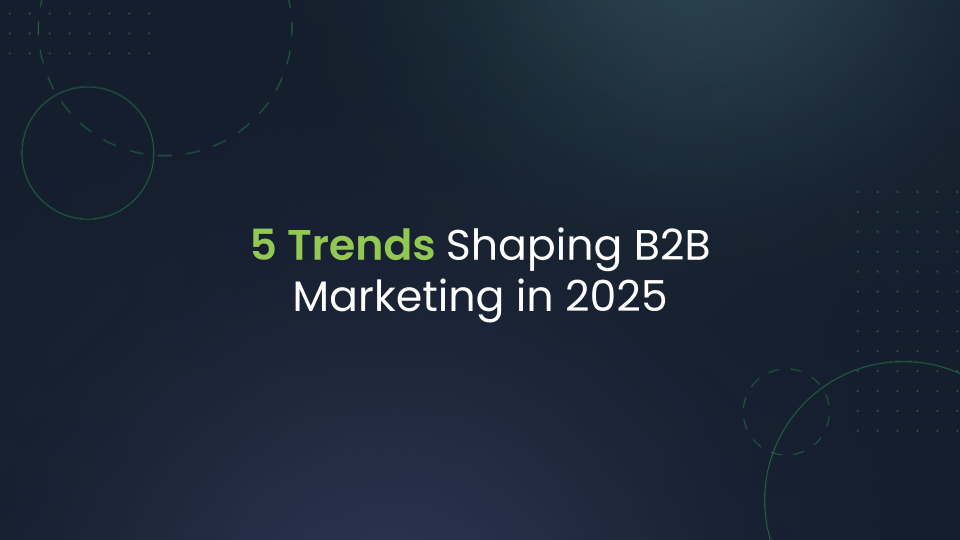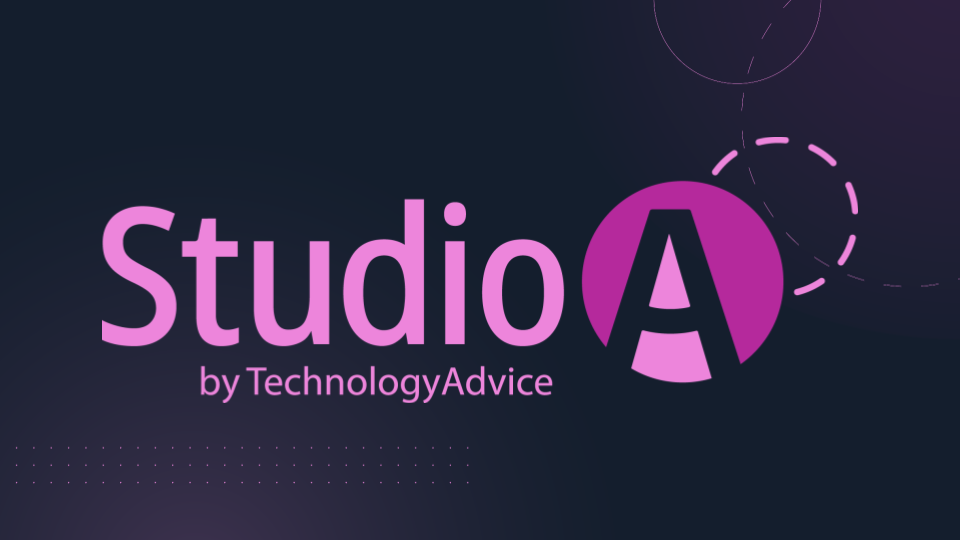B2B marketing is so easy! We just need to deliver the right message to the right stakeholders at the right accounts at the right time… on the right channels. No problem, right?

More Channels, More Buyers, No Problem
With more digital channels, content formats, and decision-makers than ever before, it’s not so easy Rachael. In fact, this is a huge – and growing – challenge for most B2B marketing teams.
We’re also faced with the reality that most of the research and evaluation process (80%+ according to the big research firms) is happening online in a self-service manner, meaning our marketing messages and content can make or break opportunities to be shortlisted by potential customers.
No pressure marketing friends, but the future of revenue is on your shoulders.
So what does it take to develop a high-impact omni-channel marketing program that aligns with the expectations and behaviors of today’s B2B buyers? How can we scale our programs to engage multiple stakeholders across dozens of channels with a range of content formats?
We dove into this topic with B2B marketing leaders from SAS, S&P Global, and Kindling Media at the Music City Demand Gen & Digital Marketing Summit (“MCDGS” for short) and pulled out some great insights and important strategies that every marketing team should be considering.
Let’s dive into the ominous world of omni-channel B2B marketing.
Using Digital Channels to Build Brand Authority
Whether you’re focused on awareness, influence, thought leadership, or demand generation, building your brand across digital channels will be critical in the quarters ahead.
In fact, many marketers are seeing brand building activities as being more important than ever due to increased competition, new market dynamics, and the accelerated pace of product innovation occurring in most technology segments thanks to the rise of AI and hyper automation.
It’s a brave new world where new products seem to enter the market every day and the barriers-to-entry for any business to create and distribute vast amounts of content are all but disappearing. To win in this market, growth-oriented tech providers will need to stand out from the crowd with a unique and authoritative brand that keeps them top-of-mind and relevant with targeted audiences.
But to stay top-of-mind they’ll need to reach audiences on a wide range of channels, including:
- Social media (i.e. LinkedIn, Instagram, Reddit, Meta)
- YouTube and podcasts
- Media sites and publishers (i.e. TechRepublic, eWeek, vertical-specific sites)
- Industry newsletters
- Relevant influencers
- Digital events and webinars
These modern brand building approaches aren’t just about increasing awareness and brand recall. Say it with us, marketers: strong brand affinity drives more efficient and effective lead generation and account-based marketing.
At the recent MCDGS event, Bess Creech, Director of Digital Marketing and Brand Advertising at SAS, shared why her team is doubling down on omni-channel brand building programs and how she’s tracking the impact of these initiatives on down-funnel demand generation:
Wait, did you hear that?!?
“Customers exposed to brand messaging on LinkedIn were 5x more likely to turn into a sale.”
“After being exposed to brand messages, the likelihood of filling out a form on LinkedIn increases by 13x and the likelihood to respond to a LinkedIn Inmail increases by 6x.”
THAT’S WHAT WE’RE TALKIN’ ‘BOUT, B2B MARKETERS!!!
Bess, you’re our omni-channel full-funnel marketing hero.
Reaching More Stakeholders to Drive ABM Success
Omni-channel marketing has evolved a lot from the days of just reaching your primary persona across various digital channels. With the rise of account-based marketing (ABM) as a cornerstone of B2B demand generation, marketers are finding new ways to reach multiple stakeholders at key accounts on the channels they know and trust.
But with 10+ stakeholders in many B2B tech buying teams, this can be a daunting task – especially if different personas have unique preferences for how and where they prefer to learn and evaluate.
For example, it’s not atypical for an IT solution provider to have the following personas in their target buying committees:
- Data Analyst – prefers to read articles and reviews on TechRepublic and TechnologyAdvice.com to learn about new topics and identify potential vendors
- Director of Information Security – listens to the eWeek eSpeaks podcast to stay up on current trends and attends webinars featuring his industry peers and researchers
- CIO – engages in content on her favorite social media channels and watches short-form videos on specific topics of interest
- Procurement Sponsor – relies on comparison articles and product reviews to validate potential solutions and identify competitive solutions for price comparison
- CFO – subscribes to multiple tech newsletters to stay up-to-date on relevant trends, technologies, and brands to help inform business decisions
- CEO – relies on expert-led content and analyst reports to validate recommendations put forth by the broader buying committee
And that’s only half of the people that we want to influence as part of the buying journey!
As marketers, we need to understand who each of these different personas are, what they each care about when evaluating a solution in our category, what unique questions each of them will want to get answered, what types of content they are most likely to engage with, and which channels we can effectively reach them on during different stages of the research and evaluation process.
We dove deep into this topic with our panelists at the MCDGS event to learn how important this is for their ABM programs and how they’re building a strategy to reach multiple stakeholders at key accounts with different content formats across a diverse range of digital channels:
“Make sure you’re thinking about and designing your campaign architecture to address the needs and differences of each audience member.”
Sage advice from Jennifer Ziman, founder at Kindling Media, who has done just that for many different B2B tech brands over her career.
5 Takeaways for Omni-Channel Success in 2025
Those insights were just the tip of the iceberg when it comes to planning and executing a successful omni-channel marketing approach for today’s B2B tech buyers. Here’s a handful of key takeaways that we ended up discussing in the full panel session during the event:
1. Obsess over your audience. A great omni-channel marketing strategy starts with an understanding of the different personas you want to reach, the channels you can leverage to reach those audiences, and the content formats that are best suited to tell your story on those digital channels.
2. Identify 3rd party channels beyond social media. Industry influencers, analysts, communities, newsletters, and 3rd-party media publishers can all be great channels to reach different personas and members of the buying committee. Do your own research to identify the different places where your target audiences may be engaging.
3. Brand drives demand. Influencing your target persona with brand messages across multiple channels can vastly improve the efficiency and effectiveness of your lead generation and ABM programs (watch the first video above if you’re skeptical about this). Look for ways to measure the down-funnel impact of your omni-channel paid media and thought leadership programs to better understand where to place your bets.
4. Leverage AI to personalize your messaging. Tweaking your ad copy or thought leadership for multiple channels and different stakeholder personas can be a challenge, but AI tools like ChatGPT can be a great solution for this. Use different prompts to discover the typical challenges different personas may have and to create sample copy or content to specifically appeal to those individuals.
5. “Campaign architecture” should be your new favorite term. As Jennifer Ziman shared in the second video above, starting with a campaign architecture that clearly identifies the stakeholders, key messages, content formats, and primary channels is a great way to build your omni-channel programs.
And if you’re looking for new channels to reach your target audience, or a fresh perspective on how to build an audience-centric content or omni-channel marketing strategy, contact the fine folks at TechnologyAdvice who help the largest B2B tech companies do this every day.
P.S. Want to watch the full session recording, along with all the other great content from the Music City Demand Gen & Digital Marketing Summit? Contact us directly and we’ll get you access to the full on-demand session hub.





